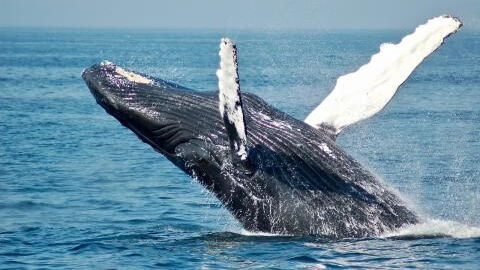It's arguably one of the most controversial inventions in human history. As the war drew to a close, scientists working on the Manhattan Project were conducting research into the design of an atomic bomb. The project was nearing completion when several researchers witnessed the remote detonation of a test bomb. Here is how they reacted.
Discover our latest podcast
The explosion of the first atomic bomb
This week, two highly-anticipated blockbusters are coming into our theaters. On the one hand, there's the Barbie movie, which looks like an instant classic. On the other hand, there's Oppenheimer, a biopic about the scientist regarded as the 'father of the atomic bomb'.
To mark the occasion, Live Science shared some excerpts from American Prometheus: The Triumph and Tragedy of J. Robert Oppenheimer, the book on which the film is based. Published in 2005, the book recounts the reaction of scientists who witnessed the first atomic bomb test explosion.
The day was July 16, 1945. The war had been raging for many years; Nazi Germany had surrendered, but Japan refused to surrender. The cities of Hiroshima and Nagasaki were still intact and had not yet tasted the destructive fire of these apocalyptic weapons. In fact, nobody knew exactly what an atomic explosion looks like...
Read more:Nuclear explosion: This video reveals the effect on our bodies second by second
The night turned into day
On the night of July 16, 1945, scientists witnessed a spectacle that was beyond them. Chemist Joe Hirschfelder recalls:
Suddenly, the night turned into day, and it was extremely bright, cold turned to heat; the fireball gradually changed from white to yellow, then to red as it grew and climbed into the sky; after about five seconds, darkness returned, but the sky and air filled with a violet glow, as if we were surrounded by an aurora borealis.
Frank Oppeinheimer, who was at his brother's side during the explosion, was seized with panic at the sight of the fireball and radioactive cloud.
I think the most terrifying thing was this really bright purple cloud, black with radioactive dust, just hanging there and we didn't know if it was going to rise or drift towards us.
On August 6 of that year, just a few days later, an atomic bomb exploded over Hiroshima; on August 9, another bomb fell on Nagasaki.
Read more:Ex-Russian President Dmitry Medvedev claims nuclear apocalypse is 'quite probable'
This article has been translated from Gentside FR.
Sources used:
LiveScience: 'The night turned into day': How Manhattan Project scientists reacted to the world's first atomic bomb test















